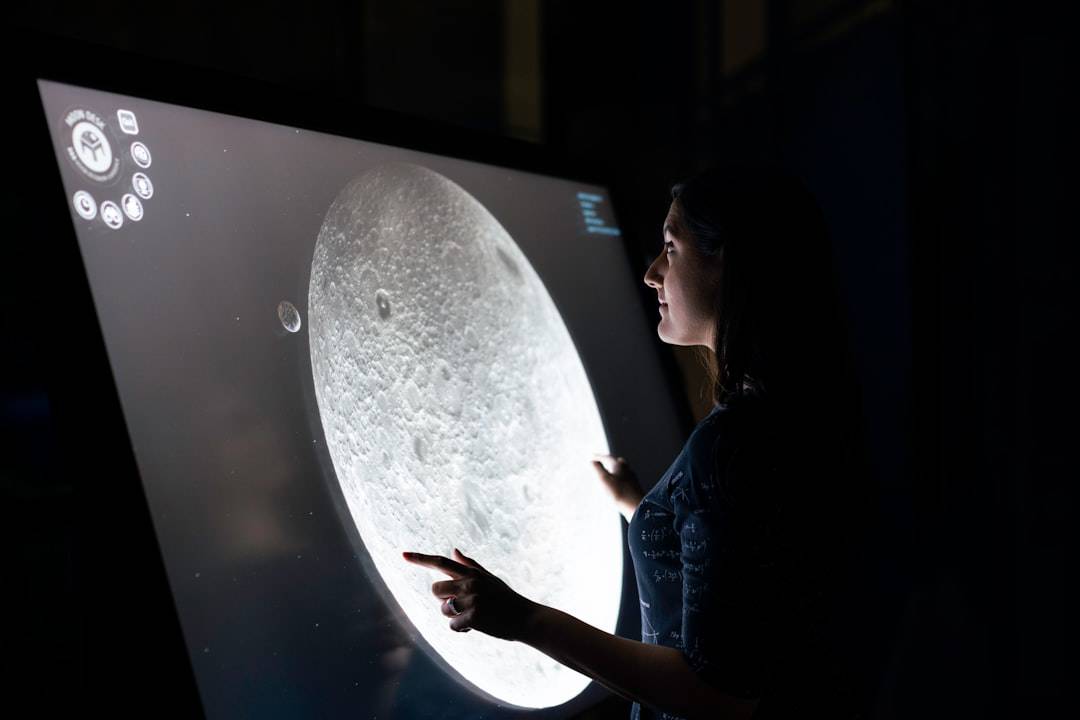The metaverse is a concept that describes a collective virtual shared space, combining virtually enhanced physical reality and physically persistent virtual reality. It represents a virtual universe that integrates multiple virtual worlds, augmented reality, and the internet. In this space, users can interact with each other and digital objects in real-time through avatars or digital representations of themselves.
While the concept of the metaverse is not new, recent technological advancements have brought it closer to realization. The development of virtual reality (VR), augmented reality (AR), blockchain technology, and artificial intelligence (AI) has made the metaverse more tangible and accessible to the general public. The potential of the metaverse to transform human interaction and engagement with digital content is significant.
It offers new possibilities for social interaction, entertainment, education, and commerce. As technology progresses, the line between physical and digital worlds continues to blur, with the metaverse at the forefront of this convergence. In the metaverse, users can immerse themselves in virtual environments that closely resemble reality and interact with others in unprecedented ways.
As this digital frontier evolves, it is crucial to consider its implications and potential impact on various aspects of human life in the future.
Key Takeaways
- The Metaverse is a collective virtual shared space, created by the convergence of virtually enhanced physical reality and physically persistent virtual reality.
- Virtual Reality (VR) and Augmented Reality (AR) are key components of the Metaverse, providing immersive experiences and blending the physical and digital worlds.
- Blockchain and cryptocurrency play a crucial role in the Metaverse, enabling secure transactions, digital ownership, and decentralized governance.
- Artificial Intelligence (AI) is integrated into the Metaverse to enhance user experiences, personalize interactions, and automate tasks.
- The Metaverse has significant social and economic impacts, influencing how people interact, work, and conduct business in a virtual environment.
- Security and privacy are major concerns in the Metaverse, requiring robust measures to protect user data and prevent unauthorized access.
- The future of the Metaverse holds potential for further innovation, expansion, and integration into various aspects of daily life.
Virtual Reality (VR) and Augmented Reality (AR) in the Metaverse
Immersive Experiences
VR immerses users in a completely virtual environment, while AR overlays digital information onto the real world. Both technologies have the potential to transform the way we interact with digital content and each other.
Expanding Possibilities
In the context of the metaverse, VR and AR enable users to create and explore virtual worlds, interact with digital objects, and communicate with others in real-time. Their integration into the metaverse will expand their reach and impact, already being used in various industries such as gaming, entertainment, education, and healthcare.
New Frontiers
This level of immersion opens up new possibilities for social interaction, entertainment, and commerce. For example, users can attend virtual concerts, explore virtual museums, or shop in virtual stores, all from the comfort of their own homes. Additionally, VR and AR can be used for educational purposes, allowing students to explore historical events or scientific concepts in a more engaging and interactive way.
Blockchain and Cryptocurrency in the Metaverse

Blockchain technology and cryptocurrency are also playing a significant role in the development of the metaverse. Blockchain is a decentralized and distributed ledger technology that enables secure and transparent transactions, while cryptocurrency is a digital or virtual currency that uses cryptography for security. In the context of the metaverse, blockchain and cryptocurrency can be used to create secure and decentralized virtual economies, enabling users to buy, sell, and trade digital assets within virtual worlds.
This has the potential to revolutionize the way we think about ownership and value in virtual spaces. Blockchain technology provides a secure and transparent way to track ownership and transactions within the metaverse. This means that users can have confidence in the authenticity and scarcity of digital assets, such as virtual real estate, artwork, or collectibles.
Additionally, cryptocurrency can be used as a medium of exchange within virtual worlds, allowing users to participate in virtual economies without relying on traditional fiat currencies. This opens up new opportunities for creators and developers to monetize their content and for users to participate in virtual economies in a meaningful way. As blockchain technology continues to evolve and become more integrated into the metaverse, it has the potential to create new economic opportunities and redefine how we think about value in virtual spaces.
Artificial Intelligence (AI) in the Metaverse
| Metrics | Data |
|---|---|
| AI Chatbots in Metaverse | 80% |
| AI Virtual Assistants | 65% |
| AI Content Generation | 50% |
| AI Virtual Characters | 70% |
Artificial intelligence (AI) is another key technology that is shaping the development of the metaverse. AI enables virtual environments to be more dynamic and responsive, creating more immersive and engaging experiences for users. In the context of the metaverse, AI can be used to create intelligent virtual characters, personalize user experiences, and automate various aspects of virtual worlds.
This has the potential to make the metaverse more interactive and lifelike, blurring the lines between reality and virtuality even further. AI can be used to create intelligent virtual characters that can interact with users in meaningful ways. These characters can have their own personalities, emotions, and behaviors, making interactions within the metaverse more engaging and realistic.
Additionally, AI can be used to personalize user experiences within virtual environments, tailoring content and interactions based on individual preferences and behaviors. This level of personalization can make the metaverse feel more immersive and relevant to each user. Furthermore, AI can be used to automate various aspects of virtual worlds, such as generating content, managing virtual economies, or moderating user interactions.
As AI technology continues to advance, it will play an increasingly important role in shaping the metaverse and creating more compelling experiences for users.
Social and Economic Impacts of the Metaverse
The development of the metaverse has significant social and economic implications that will shape our future interactions with digital content and each other. From a social perspective, the metaverse has the potential to create new opportunities for social interaction and connection. People from all over the world can come together in virtual spaces to socialize, collaborate on projects, or attend events.
This level of connectivity has the potential to break down geographical barriers and create more inclusive and diverse communities within the metaverse. From an economic perspective, the metaverse has the potential to create new opportunities for commerce and entrepreneurship. Virtual economies within the metaverse can enable creators and developers to monetize their content in new ways, such as selling virtual goods or offering virtual services.
Additionally, businesses can use the metaverse as a platform for marketing, customer engagement, or even conducting virtual events. As the metaverse continues to develop, it will be important to consider how it will impact traditional industries and how it can create new economic opportunities for individuals and businesses alike.
Security and Privacy in the Metaverse

Protecting User Data
With vast amounts of personal data being shared within virtual environments, concerns arise about how this data will be safeguarded and utilized. It’s essential for developers and platform providers within the metaverse to prioritize security and privacy measures, ensuring that users’ data is shielded from unauthorized access or misuse.
Moderating User Interactions
As virtual environments become increasingly immersive and lifelike, there’s a growing need for effective moderation tools to ensure that users can interact with each other in a safe and respectful manner. This will require a combination of technological solutions and community guidelines to create a positive and inclusive environment within the metaverse.
Creating a Safe and Respectful Environment
By implementing robust security measures, moderating user interactions, and fostering a culture of respect and inclusivity, we can create a thriving metaverse that benefits all users.
The Future of the Metaverse
The future of the metaverse is full of possibilities and potential for innovation. As technology continues to advance, we can expect to see even more immersive and interactive virtual environments that blur the lines between reality and virtuality. The metaverse has the potential to revolutionize how we interact with digital content, each other, and even ourselves.
In terms of social impact, we can expect to see more diverse and inclusive communities forming within the metaverse as people from all over the world come together in virtual spaces. This level of connectivity has the potential to break down geographical barriers and create new opportunities for collaboration and social interaction. From an economic perspective, we can expect to see new opportunities for commerce and entrepreneurship within virtual economies.
Creators and developers will have new ways to monetize their content through virtual goods or services, while businesses will have new platforms for marketing and customer engagement. In terms of technology, we can expect to see even more advanced applications of VR, AR, blockchain, cryptocurrency, and AI within the metaverse. These technologies will continue to evolve and become more integrated into virtual environments, creating even more compelling experiences for users.
Overall, the future of the metaverse is full of potential for innovation and positive impact on society. As technology continues to advance, we can expect to see even more immersive and interactive virtual environments that revolutionize how we interact with digital content and each other.
If you’re interested in learning more about the future trends and innovations in the metaverse industry, you should check out this article. It provides projections and insights into the exciting developments happening in the metaverse space. Additionally, you can also explore the latest advancements in metaverse technologies, such as the Xiomi HyperOS, by visiting this link. For a comprehensive overview of major metaverse platforms and ecosystems, this article offers valuable information on the different platforms shaping the metaverse landscape.
FAQs
What are metaverse technologies?
Metaverse technologies refer to a collection of virtual and augmented reality tools, platforms, and applications that enable users to interact and engage in a shared digital space.
What are some examples of metaverse technologies?
Examples of metaverse technologies include virtual reality headsets, augmented reality apps, 3D virtual worlds, virtual meeting platforms, and immersive gaming environments.
How are metaverse technologies used?
Metaverse technologies are used for a variety of purposes, including socializing, gaming, virtual events, education, training, virtual commerce, and collaborative work environments.
What are the potential benefits of metaverse technologies?
The potential benefits of metaverse technologies include enhanced collaboration, immersive experiences, new forms of entertainment, virtual travel, improved accessibility, and innovative ways to interact with digital content.
What are some challenges associated with metaverse technologies?
Challenges associated with metaverse technologies include privacy concerns, digital security risks, potential for addiction, technological barriers, and the need for standards and regulations in virtual environments.











Leave a Reply